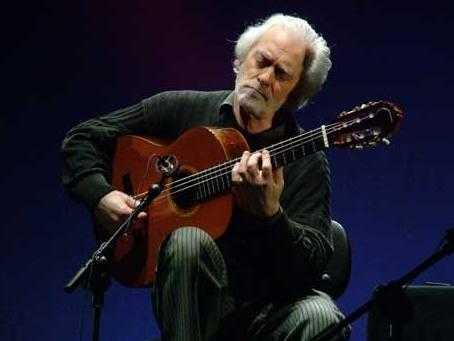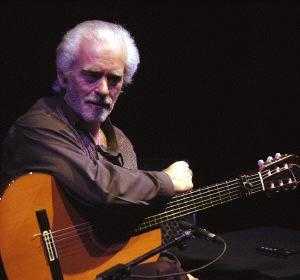Manolo Sanlúcar

Full name
Place of birth
Biography
Manuel Muñoz Alcón was born in Sanlúcar de Barrameda in 1943 He is one of the most important guitarists of all times and along with Paco de Lucía and Serranito, he composed the triumvirate of the guitar revolution of the twentieth century He took his first steps with la Bajañí alongside his father, the amateur Isidro Sanlúcar, who took him to Sevilla whilst still a child to listen to Pepe Pinto It was as easy as falling of a log, El Pinto put him in front of José Tejada Martín, Pepe Marchena, who were surprised by his guitar playing, and in consequence was taken on tour by them to numerous countries His first album was recorded with El Pinto and later he went on to accompany La Paquera de Jerez, with whom he also recorded Already in the throes of the seventies, Manolo Sanlúcar joined the 'tablao´ Las Brujas´ team in Madrid and here he took on his solo career recording his first albums as a solo guitarist However, he still had time to break moulds, along with Enrique Morente, before composing his trilogy Mundo y formas de la guitarra for the record company CBS He opened the way with the 'rumba´ Caballo negro He opened the doors of the Real Theatre in 1976 and in 1978 recorded Fantasía para guitarra y orquesta, a piece with which he began to constitute part of his great personality as a flamenco guitarist, always linked to what he called cult music In 1980 he was recognised as the best national instrumentalist Four years later he premiered his version of Medea, which he composed for the National Spanish Ballet and played alongside Madrid´s Symphonic Orchestra and the dancing of Manuela Vargas Later he composed other records, such as Oripandó or Y regresaste, the latter based on the poems of Miguel Hernández, where he included the mythical Elegía a Ramón Sijé, a genius of composition and execution On top of this, many youngsters passed through his hands that are now great guitarists such as Vicente Amigo, Rafael Riqueni, José Antonio Rodríguez, El Niño de Pura or Juan Carlos Romero His symphonic tendencies have led him to compose two other important records: Trebujena (1987) and Aljibe (1992) However, Manolo Sanlúcar´s great masterpiece is Tauromagia, an album which, through music, the maestro attempts the narrative of the details of the national festival - bullfighting - being able to provoke true melodic images relating to the bull Many experts, such as José Manuel Gamboa, don´t doubt in pointing out that this is the best record of flamenco guitar music in history Last of all, Manolo Sanlúcar also recorded in 1999 Locura de brisa y trino, after having premiered it in the Biennial in 1998, along with the voice of Carmen Linares He participated in Carlos Saura´s Sevillanas along with Paco de Lucía, his ´compadre´ and friend It is possible that all the fundamental influences of the 'cabal´ style are united in these cinematic images





